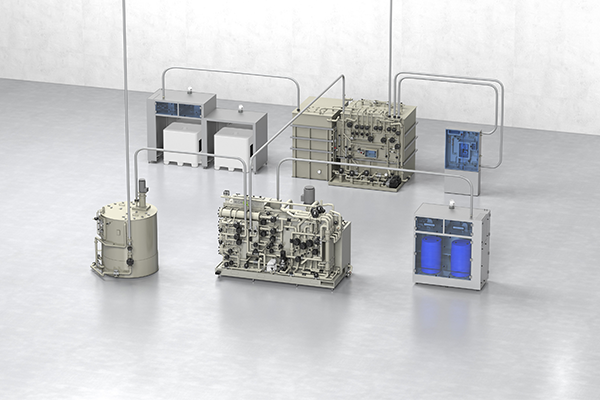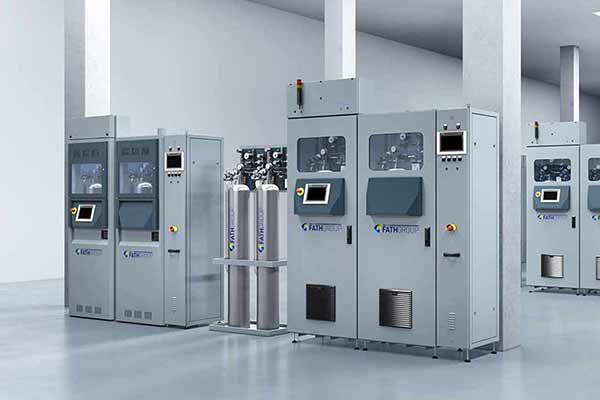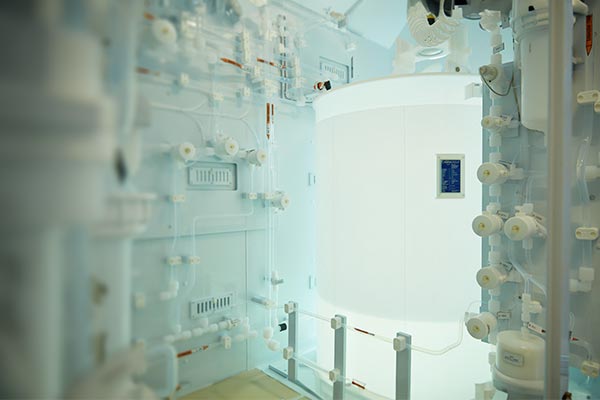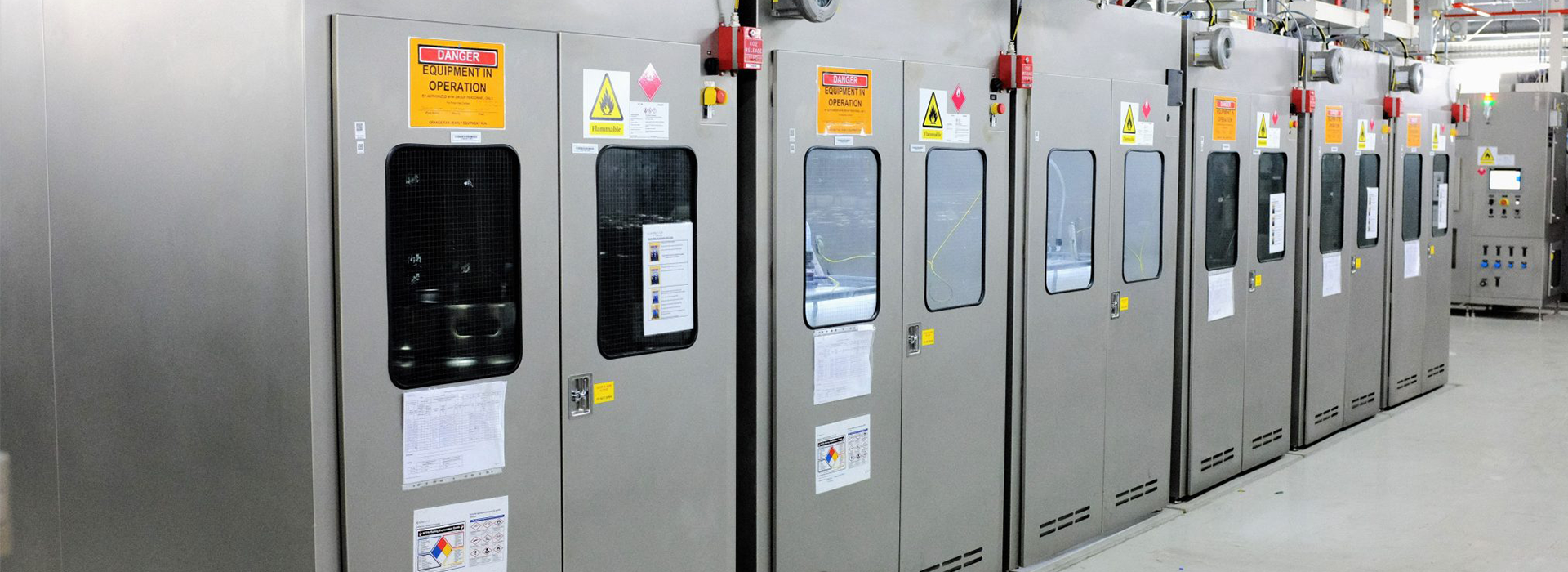- overview
- Our products
- solvent disposal systems
- equipment features
Effective Disposal of Solvents: Faeth Systems in Use
Faeth solvent waste collection system is a special system or equipment, designed for safely collecting, treating and disposing solvent waste. They serve to protect the environment from harmful effects caused by improperly disposed solvents and to ensure compliance with environmental regulations. The use of solvent disposal systems ensures the safe and environmentally sound disposal of solvent waste, helps to reduce environmental pollution, and supports companies in meeting their legal obligations when dealing with hazardous chemicals.
Environmental Protection
The system help protect the environment from the harmful effects of improperly disposed solvents. They prevent the pollution of soil and water and reduce emissions into the air.
Compliance
These utilised systems ensure that companies and facilities comply with all applicable environmental regulations and standards. This procedure minimises the risk of fines and legal consequences.
Efficiency Increase
These systems enable the efficient collecting, storage and disposal of solvents. This may save time and resources, which are otherwise being spent on costly waste management procedures.
Contamination Avoidance
An accurate treatment and disposal of solvents prevents the contamination of soil, water and air. This fact is essentially important in sensitive environments or nearby drinking water sources.
Safe Treatment of Solvents: Efficient Solutions for Your Business Operation
Solvent Waste Collection System offers many different types that are specifically engineered for solvent handling, storage and transport.
Solvent Tanks
Specifically, designed tanks are used for the safe storage of solvents. These tanks are often made of stainless steel or of special conductive plastic materials, offering safety features such as pressure monitoring and level measurement.
Pumps
High quality pumps are deployed for pumping the solvents. Depending on the requirements, different types of pumps may be used, including gear pumps, diaphragm pumps or centrifugal pumps.
Pipings
Special piping systems are installed for safely and efficiently distributing solvents throughout a plant. These pipelines are often made of high-quality materials, such as stainless steel or special plastics, designed and constructed for maintaining solvent purity and for avoiding pollution.
Valves and Controls & Instruments
A variety of valves, controls and -instruments are used in solvent supply systems for regulating the solvent´s flow and control. Examples hereof are shut-off valves, check valves, flowmeters and pressure regulators.
Monitoring and Control Systems
Modern solvent supply systems often include advanced monitoring and control technologies. These include sensors for monitoring levels, pressures and temperatures, as well as control units, able to automatise and to monitor plant operations.
Safety Precautions
Solvent supply systems are equipped with various safety features for minimising accidents and hazards. These may include safety sensors, alerts, fire suppression systems and further safety equipment.
Solvent Recovery Systems
These systems enable the recovery and re-use of solvents used in industrial processes. They deploy various technologies such as distillation, adsorption or membrane filtration, for separating solvents from impurities and for re-introducing them back into the production cycle.
Solvent Distillation Systems
These systems use distillation technology to separate utilised solvents from impurities. They heat the solvent to vaporize, then to condense and finally to separate it from impurities. The purified solvent can then be re-used.
Solvent Separation Systems
These systems remove impurities such as particles, oils or solids from utilised solvents. They deploy technologies such as filtration, sedimentation or centrifugation for separating the impurities and for purifying the solvent.
Solvent Evaporation Systems
These systems make use of evaporation techniques for separating solvents from water or other volatiles. They heat the solvent to vaporize, then make it condense and then separate it from impurities. The purified solvent can then be re-used for different purposes.
Solvent Treatment Systems
These systems combine various technologies such as distillation, filtration and adsorption to purify solvents from impurities, preparing them for re-use. They may include various purification stages and treatment processes, ensuring an optimal solvent quality.
Standard Functions
- For holding 60L to 1000L, drums or IBC’s may be placed inside the cabinet, or externally
- Fully automatic pump switching function for an interruption-free feed of chemicals
- Automatic system shutdown by hardware safety interlocks
- Pressure monitoring and regulation of the supply line, ensuring a constant pressure at the point of use
- Centrifugal pump for high flow applications
- Redundant pumps and filters possible
- Automatic pump and filter venting, if required
- Manual flushing and cleaning of the system
- Monitoring of filter service life via differential pressure monitoring, upstream and downstream of the filter
- Nitrogen overlay of the solvents in the drums or containers, if required
- UPW or UN2 spray gun
- Additional pressure sensors for auxiliary media within the pneumatic system
Control Panel
- Siemens SIMATIC S7 series PLC
- Siemens SIMATIC Comfort Panel HMI
- User authorization and password protection HMI
- Multilingual operating instructions on the HMI
- Manual operation of pneumatic valves
- Linking with a monitoring and
- Data acquisition system to control the system
- Access for service and maintenance via remote control module
Safety Functions
- Insulated process and electrical casings
- CDA flushing function of the electrical casing
- Audible and visual alerts and warnings
- Local and remote EMO (Emergency Off) detection of exhaust gas flow
- Leakage detection in the casing
- Door locking system
- Failure Mode and Effect Analysis (FMEA)
- Fire detection
Options
- Temperature monitoring
- Disposal tank capacity up to 2000 l inside the cabinet
- High-precision radar sensor for level monitoring of the disposal tank
- Platform scale for online level-monitoring
- Fire detection and extinguishing systems
Security features
- Stainless steel housings or catchment devices
- Insulated process- and electrical enclosures
- Automatic Z-venting function with controller for the electrical casing
- Application of inerting devices as safety protection technology
- Audible and visual alerts and warnings
- Local and remote EMO (Emergency-Off)
- Exhaust gas flow detection
- UV/IR and flame detection
- Casing leakage detection
- Leakage detection for utility services
- Door locking system
- Flame arrester as a puncture protection
- Failure Mode and Effect Analysis (FMEA)
You may also find these topics interesting

HighQ
The future of the semiconductor industry is here to find: Faeth Group’s patented recycling plant for environmentally friendly slurry raw material recovery!

Gas support systems
Experience the innovative Gas Support Systems by Faeth Group for the industry, pharma & lab – perfectly adapted to your requirements.

OEM Contract Manufacturing
Increase your productivity with our OEM contract manufacturing. Learn more about our matching solutions!

